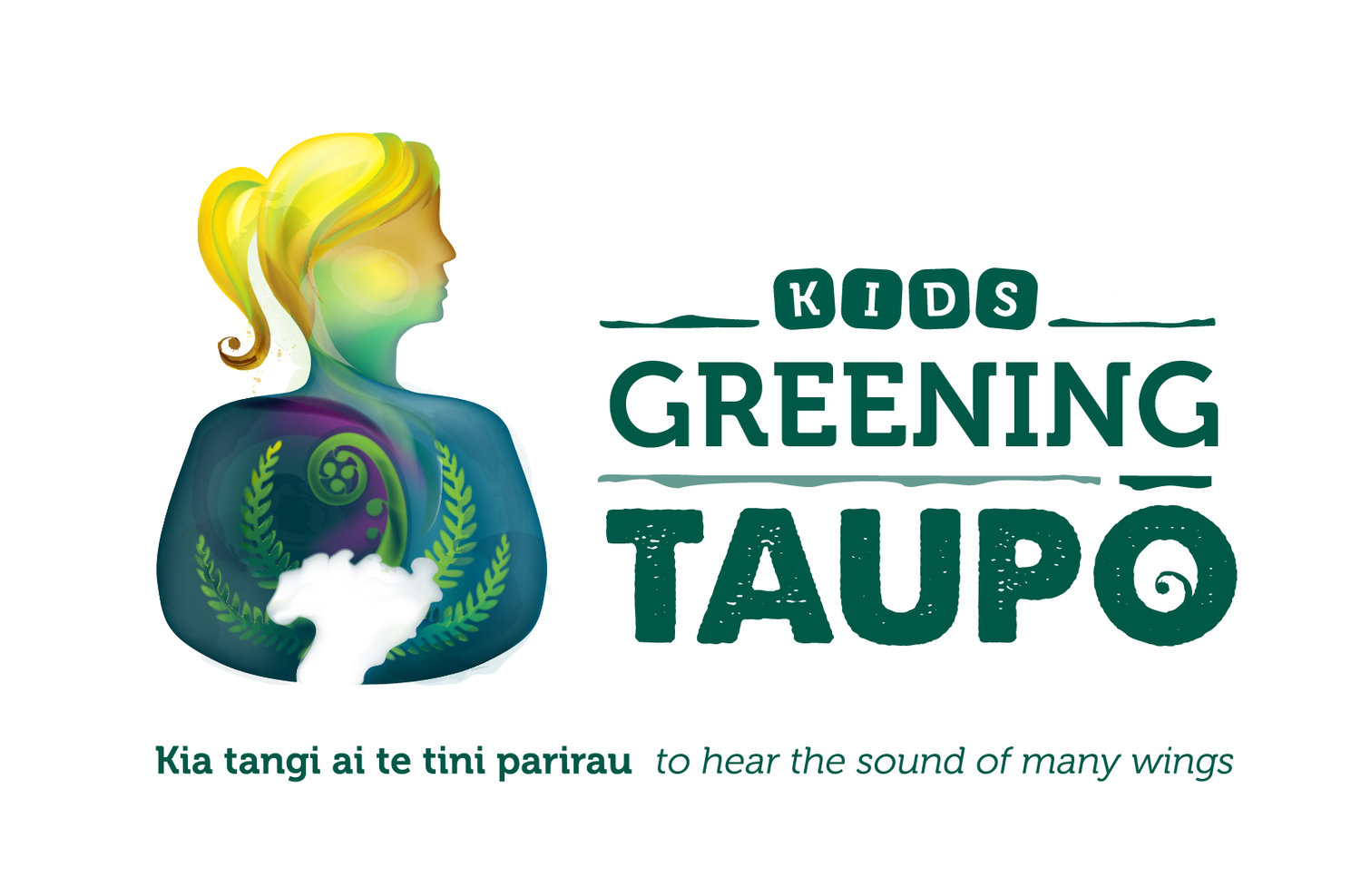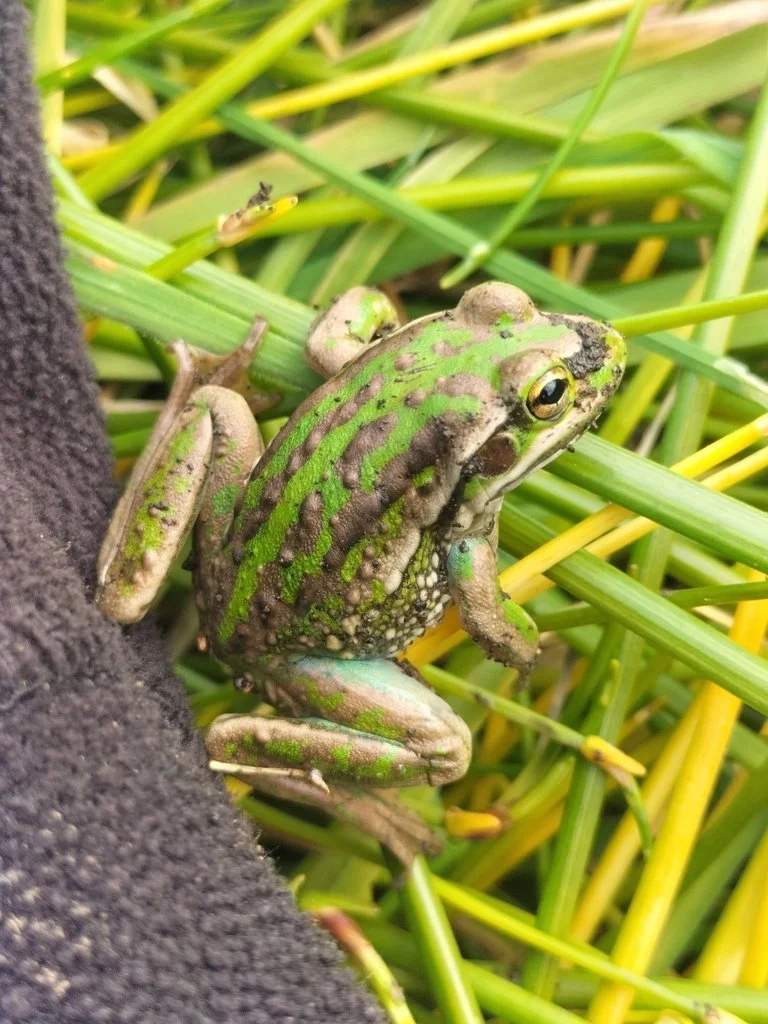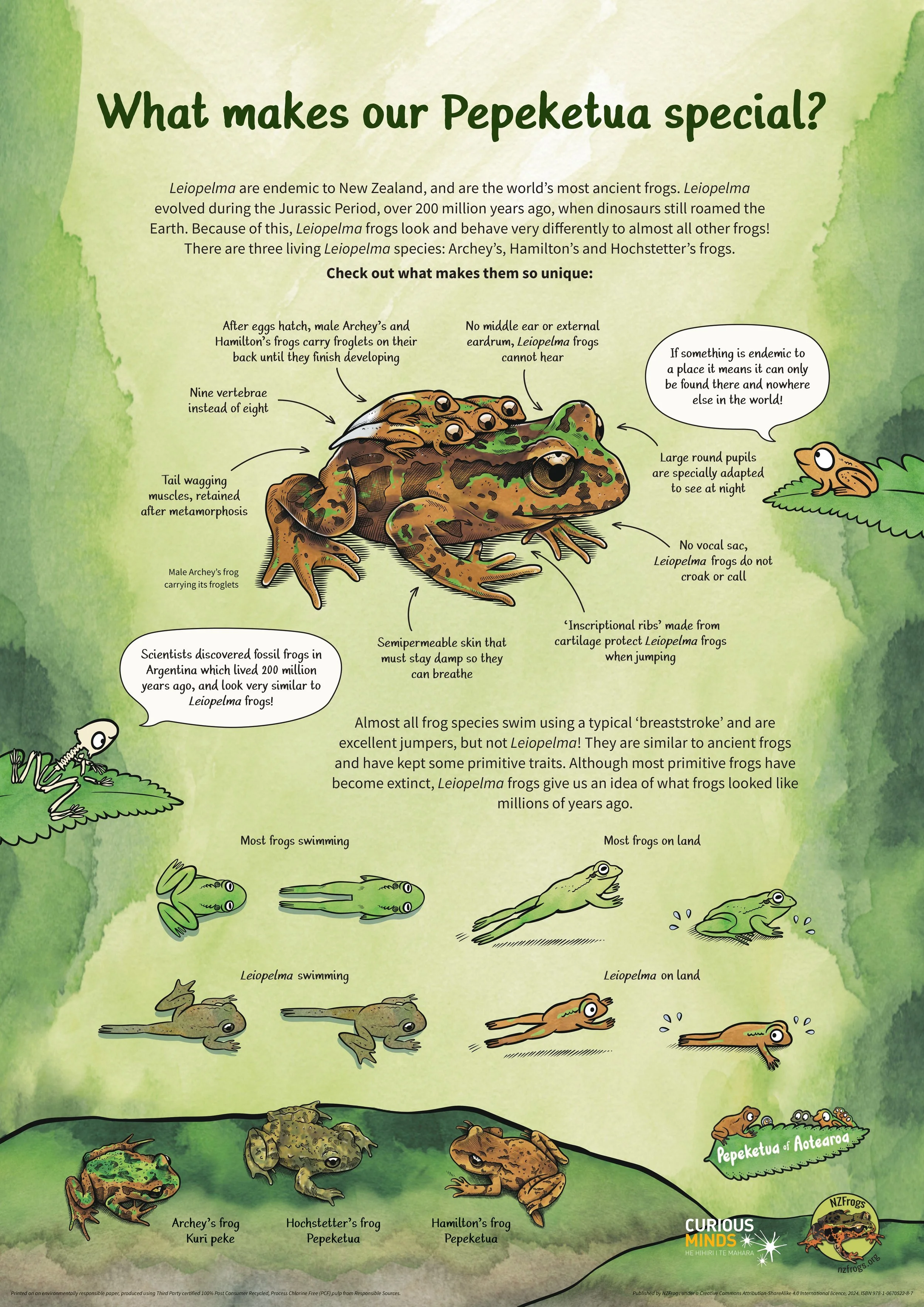Learn About Our Unique Native Frogs
Archey’s Frog -Photo by Amanda Haigh
Amazing Pepeketua of Aotearoa!
Archey’s Frog - Photo: Amanda Haigh
In Aotearoa, we have some very special and unique pepeketua (frogs). They are endemic, which means they live only here and nowhere else in the whole world! After humans arrived in Aotearoa, clearing forest and introducing predators such as rats, three species of these frogs became extinct. We only have three species left today and they are all at risk of extinction. Their names are:
🐸 Archey’s Frog
🐸 Hamilton’s Frog
🐸 Hochstetter’s Frog
You have probably never seen these frogs—they’re very rare, tiny, super shy, nocturnal, and really good at hiding in the forest.
Archey’s Frog - Photo: Amanda Haigh
What makes our Pepeketua Special?
Our pepeketua are very similar to the frogs that were around during the time of the dinosaurs! They are different from other frogs that are around today in some interesting ways:
They are tiny!
They don’t have eardrums on the outside like most frogs.
Their eyes have round pupils (the black part in the middle of their eyes) to see at night.
They don’t croak! Instead, they make tiny chirps or yelps.
They land with a ‘splat’ when they jump!
They live in damp forests, not in ponds or lakes. Hochstetter’s Frog does live on the edge of streams and spend some time in the water.
They don’t have webbed feet (apart from Hochstetter's frogs that have some webbing on their feet) and are not great swimmers. They do not do the typical breast stroke kick that other frogs do.
Archey’s and Hamilton’s frogs only lay a few eggs, and they look after them carefully! Other frogs lay lots of eggs and leave them to hatch.
Archey’s and Hamilton’s frogs don’t have tadpoles! Instead, the baby frog grows inside the egg. Watch the video to see this happening! Then, the males of some species even carry their tiny froglets (baby frogs) around on their backs for several months!
Introduced Frog Species in Aotearoa
An introduced Southern Bell Frog
Photo: iNaturalist Kris_C
If you’ve seen frogs in a pond, or heard frogs croaking loudly, they’re probably one of the three species of frogs that were introduced to Aotearoa from Australia. Unfortunately, there’s a risk that these frogs could make our endemic frogs sick by spreading diseases.
🐸 Green and Golden Bell Frog
🐸 Southern Bell Frog
🐸 Tree Frog
What to do if you Find a Frog
If you are lucky enough to see a frog, please report your sighting with photo here to NZFrogs or here to DOC, or on iNaturalist NZ
This helps DOC with their research. Record the location, type of habitat (stream edge, forest floor, pond), time and date you sighted it and, if possible, take photographs. Try to take a clear photo of the side of the frog including its head. Introduced frogs have a circular eardrum on the side of their head and that can help to identify whether the frog that you found is endemic or introduced.
Here are some identification guides to help you to identify the frog that you found:
🐸 DOC introduced frog identification key
🐸 FrogsNZ Identification Key (covers native and introduced frogs)
How you can Help our Native Frogs
Our native pepeketua are super special, and we need to look after them. Their main threats are habitat loss and predators such as pigs and rats. So, planting native plants and having a backyard trap are things that you can do to help them, and to help our other native animals.
You can avoid spreading disease to our native frogs by not visiting areas where native frogs are found. If you do visit native frog habitat, make sure your footwear and other gear is clean and disinfected (check with the local DOC Office for further instructions). Never touch a native frog, as their skin is very sensitive.
Fantastic Free Resources!
Download these fantastic free resources by NZFrogs here: https://nzfrogs.org/pepeketua-of-aotearoa/
In 2024, NZFrogs received funding through the Unlocking Curious Minds Contestable Fund and created some amazing resources.
The Pepeketua of Aotearoa series includes four booklets with accompanying posters.
Additionally, two special topic posters: What makes our Pepeketua special? and Protecting our Pepeketua.
These fantastic resources all about our native frog species are available in English and Te Reo Māori.
We think these are pretty awesome! Check these resources out here.
One of the awesome resources that you can download from www.nzfrogs.org - What makes our Pepeketua special?






